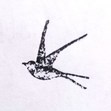Artefacts 2 – Keep The Change
I’ve spoken before about the amount of Old Things I have. I am a Haver of Stuff, like my father and his father and his father before him. In fact I Have much of their Stuff, though my father has much more. It’s partly the historian in me, partly the child: the historian yearns for old coins, the child for old LEGO and Warhammer.
And a few months ago, Dad and I got stuck into what turned out to be the most amazing load of Old Things yet: my grandfather’s old coin collection.
(A note before we begin: I am not a professional numismatist by any means. I could be very, very wrong about some of these identifications. If you’re reading this and you are a professional numismatist, please be gentle.)
I’d encountered these coins many times before: old British pre-decimal currency, one of my favourite things (not least for the unrelenting ridiculousness of how it all adds up), in huge amounts. I love old coins. They’ve always hit that perfect fantastical note for me, recognisable but just that little bit absurd and alien. Granddad gave me a few coins for my own little collection, and I’ve always treasured them, just like he and my dad did. Dad once dug up a Victorian halfpenny in the garden and we still talk about it. They’re all little bits of history, so wonderfully tangible.
 Some of my personal coins. The blackened and battered one in the top row is the ha’penny Dad found in the garden.
Some of my personal coins. The blackened and battered one in the top row is the ha’penny Dad found in the garden.Dad spent weeks actually sorting it all out – my grandfather was very good at fitting huge amounts of stuff into small sheds, but not at, y’know, actually organising it. Hundreds of coins now sit in a couple of massive coin books, organised by type and date. Most of it was actually from the late Queen’s era, but there was quite a lot from her father – the aforementioned George VI – as well, and a bit from George V.
And then there were the ones my dad hadn’t been able to identify, which meant that I got to put on my numismatist’s hat and spend a few afternoons with him figuring out what these ancient bits of copper were.
And, dear reader, we struck… well, copper, not gold (except for that one lovely sovereign). But we really struck it.
In terms of recognisable pre-decimal currency, we found every monarch back to George I – the early 1700s – except for Edward VIII because he was here for about 5 minutes. That was interesting enough. But then we went further back. A tiny weird bit of copper turned out to be from Charles I – about 1640. A misshapen bit of silver is, I’m fairly certain, from Henry III – the 1200s. 800 years old, and in my hand.
 Charles I ‘Rose’ farthing.
Charles I ‘Rose’ farthing. Possible a Henry III silver penny. Really hard to tell as the inscription is very worn and battered.
Possible a Henry III silver penny. Really hard to tell as the inscription is very worn and battered.And that was just the British coins. We also had these odd squiggly squares, which, after consulting Dr Shailendra Bhandare at the Ashmolean in Oxford, turned out to be from the Sultanate of Kashmir in the 1400s. Apparently Granddad just bought them on a whim at a market in India in the 80s. 600-year-old artefacts, wedged on a shelf between the power tools and the reel-to-reel film. This is the kind of man I’m going to become. I’ve already started hoarding old tins. I can’t wait.
 From the reign of Sikander Shah I, early 1400s.
From the reign of Sikander Shah I, early 1400s.And then there was this. A battered bit of bronze, so worn it was barely legible. Much Google-fu and barely-remembered ancient language translations ensued. Until, eventually, I found a match, and figured out what it said.
 Who’s That Emperor?
Who’s That Emperor?Constantius P F Aug. Sol Invicto Comiti.
Constantine Pius Felix Augustus. Sol Invictus. A Roman follis, possibly minted in London. In about 310 AD. Over 1700 years old. A bit of metal older than some religions. Older than the English language. And my grandfather just had it sitting in a bag, on a shelf, in a box, for decades. And now it’s in my hands.
The sheer amount of history that’s happened since this coin was made gives it a weight beyond that of any metal. The rise and fall of Rome, of Byzantium, the Ottoman Empire, Islam, the Vikings, to say nothing of most of British history… all of that, outdone by a little bronze circle. Watched by it. Contained within it.
Is it any wonder I’ve spent the last few years writing about fantasy archaeologists?



